What’s that one thing every business must face, even when they don’t want to?
It is dealing with difficult customers.
When customers are hard to deal with, the saying “the customer is always right” matters more than ever. It means you must try your best to make customers happy, especially when things get tricky.
But here’s the kicker: those seemingly unpleasant interactions are not headaches. They’re opportunities.
Smart business owners know creating loyal customers from service failures isn’t just about preventing bad reviews. It’s a strategic move that affects your bottom line.
This blog isn’t about turning every customer into a lifelong friend. It’s about turning a potentially sour situation into a win for your business.
In the following few paragraphs, we won’t throw jargon at you or preach about the power of positivity. Instead, we’ve got 14 truly effective tips.
Each tip is a strategic move, a practical step.
And we’re not stopping there. We dive into the types of customers you’re probably dealing with. Because understanding your customers isn’t about guesswork; it’s about good business sense.
Ready to handle the hard stuff? Let’s get strategic. Let’s get real.
Looking for a quick answer? Here are 14 ways to deal with difficult customers: 1. Stay calm 2. Be a good listener 3. Be empathetic and understand their perspective 4. Allow customers to explain their issues 5. Apologize sincerely for any issues 6. Offer solutions, compensation, or incentives 7. Set clear boundaries and expectations 8. Demonstrate patience throughout interactions 9. Follow up to ensure customer satisfaction 10. Seek supervisor assistance if necessary 11. Train staff in customer service skills 12. Implement feedback loops for continuous improvement 13. Establish a proactive communication strategy 14. Foster a customer-centric culture within the organization In this blog, we discuss more about them in detail.
Table of contents
- Why should businesses deal with difficult customers?
- Inside the minds of challenging customers: Types and tactics for dealing with them
- 14 tips to deal with difficult customers with real examples
- 6 effective strategies for handling difficult customers
- Common mistakes to avoid when dealing with difficult customers
- FAQs about how to deal with difficult customers
- Deal with difficult customers seamlessly with Birdeye
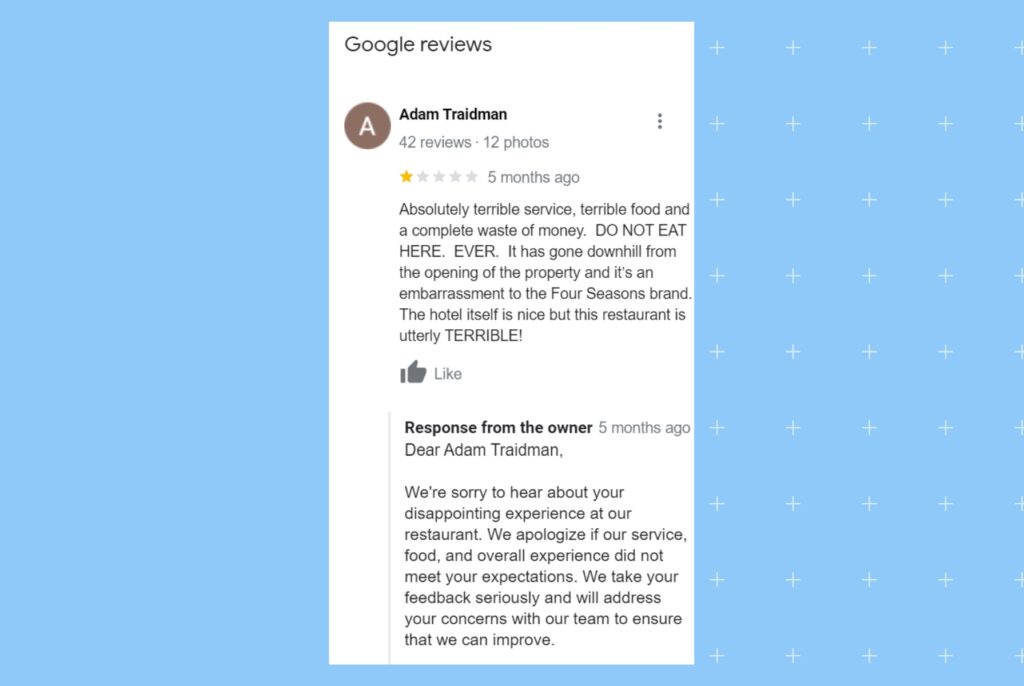
Why should businesses deal with difficult customers?
Every customer is a difficult customer at one time or another. After all, we are all human. And if you refuse to deal with people just because they are having a bad day, you’ll quickly find yourself short of customers.
Difficult customers often become your loudest cheerleaders when you perform to their high standards. Dealing with difficult customers helps you in many other ways, like:
- Customer retention: Addressing issues keeps valuable customers from leaving.
- Brand reputation: Handling difficulties well enhances a company’s image.
- Loyalty building: Effective resolution fosters customer loyalty.
- Word-of-mouth marketing: Satisfied customers become advocates, boosting referrals.
- Learning opportunities: Feedback from difficult situations guides business improvements.
- Competitive edge: Excellent service sets a business apart from competitors.
- Employee attitudes: Positive customer interactions contribute to a customer-centric culture.
- Growth potential: Customer marketing your brand will likely allow you to have repeat business and company growth.
- Business sustainability: Addressing customer concerns is vital for long-term success.

Inside the minds of challenging customers: Types and tactics for dealing with them
Handling difficult customers effectively also prevents them from using their mobile phones to spread their rants online or to friends and family. Some of them probably should be shown the door.
And while it may be hard for a business to admit, difficult customers often offer insight into a company’s shortcomings.
Below is a complete guide to help you pinpoint the types of customers you’re dealing with.
Customer Care 101: How to Effectively Deal with Difficult Customers
Want to see the impact of Birdeye on your business? Watch the Free Demo Now.
1. Angry customer
Agitated customers can highlight systemic issues within a business, signaling areas that require improvement. Addressing their concerns can increase customer satisfaction and prevent negative word-of-mouth.
There are two types of angry customers:
- One expresses anger without resorting to verbal or physical abuse.
- The other is downright abusive. They’re offensive, disruptive, or even violent.
But you can turn negative customer reviews into positive ones with reasonable solutions.
How to identify them:
Look for signs of frustration, raised voices, or impatience. Agitated customers may express dissatisfaction verbally or through body language.
How to deal with them:
- Remain calm and empathetic
- Listen actively to understand their concerns
- Apologize for any inconvenience
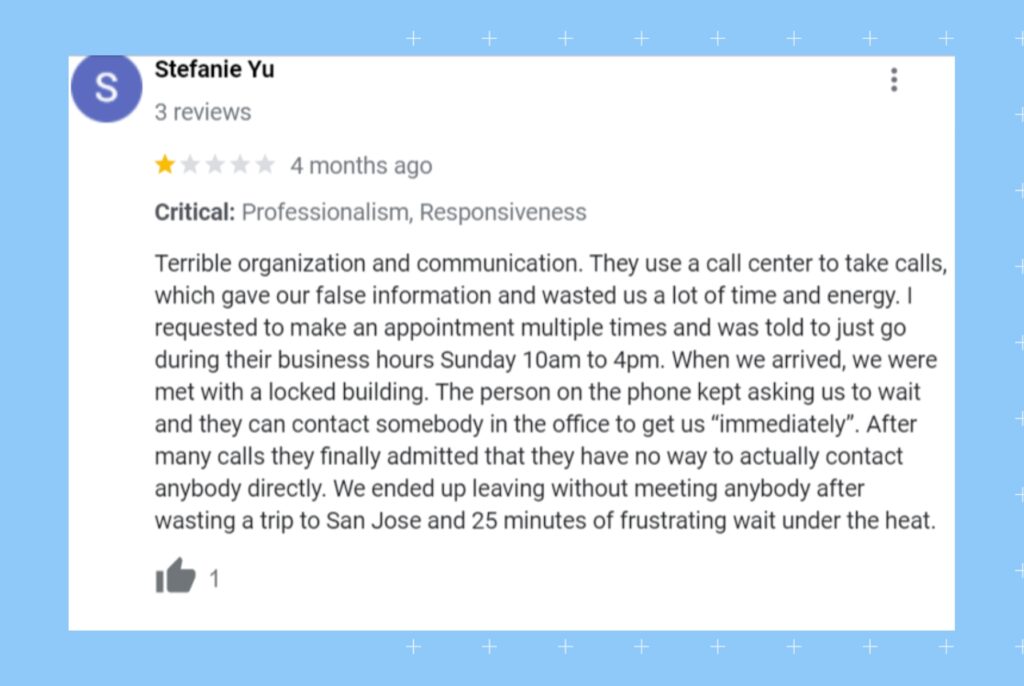
2. Indecisive customer
The indecisive customer may not be dangerous, but they’re still unpleasant. An indecisive customer will always want to see more options. Then, they’ll want to see the same options all over again.
How to identify them:
Indecisive customers may ask numerous questions, express uncertainty, or hesitate to choose.
How to deal with them:
- Be patient and provide clear information to help them make informed decisions.
- Offer guidance, showcase product features, and provide comparisons to assist them in decision-making.
3. Impatient customer
The impatient customer acts like they’re the only customer you have. They expect a response within minutes. Your delivery times never seem good enough.
How to identify them:
Sometimes, a customer uses impatience to control others. Those who refuse to acknowledge reasonable shipping times or appropriate response times often use their impatience to get what they want.
How to deal with them:
Reasonable people understand the typical speed of business. So when you meet such customers, understand their preferences quickly and explain your terms and conditions amicably.
4. The chronic complaining customer

While often frustrating, chronic complainers provide businesses with continuous feedback on areas needing improvement. For some, complaining is just a part of their personality. Addressing their concerns can lead to overall service enhancements.
How to identify them:
Left unchecked, a complaining customer can quickly hurt your reputation. They care little for other people’s problems and are likely to use abusive language to get what they want.
How to deal with them:
Every business has to deal with the occasional natural-born complainer. Always try to resolve a complainer’s issue as long as the issue is reasonable.
Sometimes, complainers will just, well, complain. If they take their grievances to online channels, then politely respond with the facts of the situation.
5. Demanding customer
Perhaps the most difficult customer example is the demanding client. The demanding customer will deplete your energy. They always want more than what they’re willing to pay for.
How to identify them:
Watch out for the endless requests of the demanding customer.
How to deal with them:
Demanding customers requires strong boundaries. You can give in a little to make them feel like they’re getting a deal. But cut them off when their demands threaten your profitability.
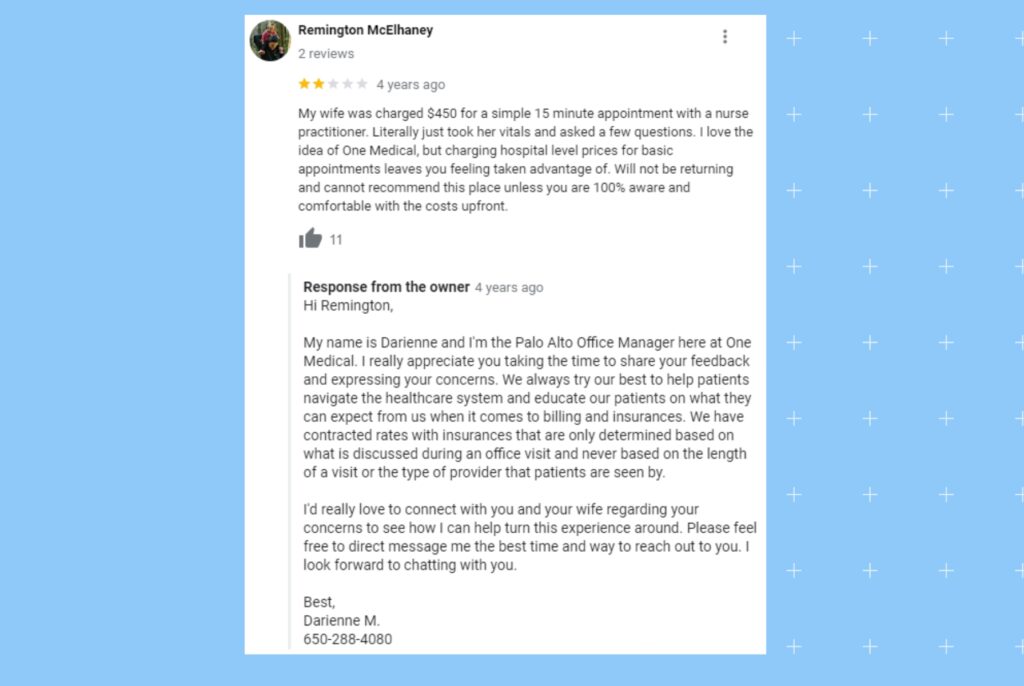
6. The silent critic or non-communicative customer
Silent critics, though not vocal about their unhappiness, silent critics can harbor deep-seated dissatisfaction.
Recognizing and addressing their needs can prevent potential negative feedback and showcase your positive customer experience toward them.
How to identify them:
- Avoid eye contact
- Rarely provide feedback, positive or negative
- Seems disengaged during interactions.
How to deal with them:
- Gently encourage communication by asking open-ended questions.
- Be attentive to non-verbal cues and create a comfortable environment for them to express concerns.
- Provide assurance and actively listen to their feedback.
Offer exceptional customer service solutions with Birdeye's transparent pricing. See how our affordable plans empower you to handle difficult customers effectively.
7. The perfectionist customer
Perfectionist customers are difficult but equally important for a business because they provide valuable feedback for fine-tuning products or services. Their attention to detail can help businesses enhance quality and meet higher standards.
How to identify them:
Perfectionist customers often focus on minor details and may express dissatisfaction if expectations are not met precisely.
How to deal with them:
- Acknowledge their high standards and express a commitment to meeting or exceeding them.
- Provide detailed information about products or services.
- Offer solutions that align with their perfectionist preferences.
14 tips to deal with difficult customers with real examples
All the types of difficult customers out there may have you feeling down. In reality, most people are pleasant to deal with.
But sometimes pleasant people have bad days. And more to the point, you’ll push even a nice person to the brink if you provide shoddy customer service.
With that said, let’s dive into our step-by-step guide to dealing with difficult customers:
1. Stay calm
Never match the emotional energy of a difficult customer.
Staying calm is just as important for your mental health as your business. Keeping your cool is also contagious.
That’s why it’s one of the most effective ways to deal with difficult customers.
2. Be a good listener
Feeling heard is a universal human need. And you can fulfill that need when you listen to difficult customers.
Listening makes finding a suitable solution to the customer’s problem easier. So, Pay attention, avoid interrupting, and let the customer express their concerns fully.
That’s because you don’t know how to deal with a difficult customer until you fully understand his perspective.
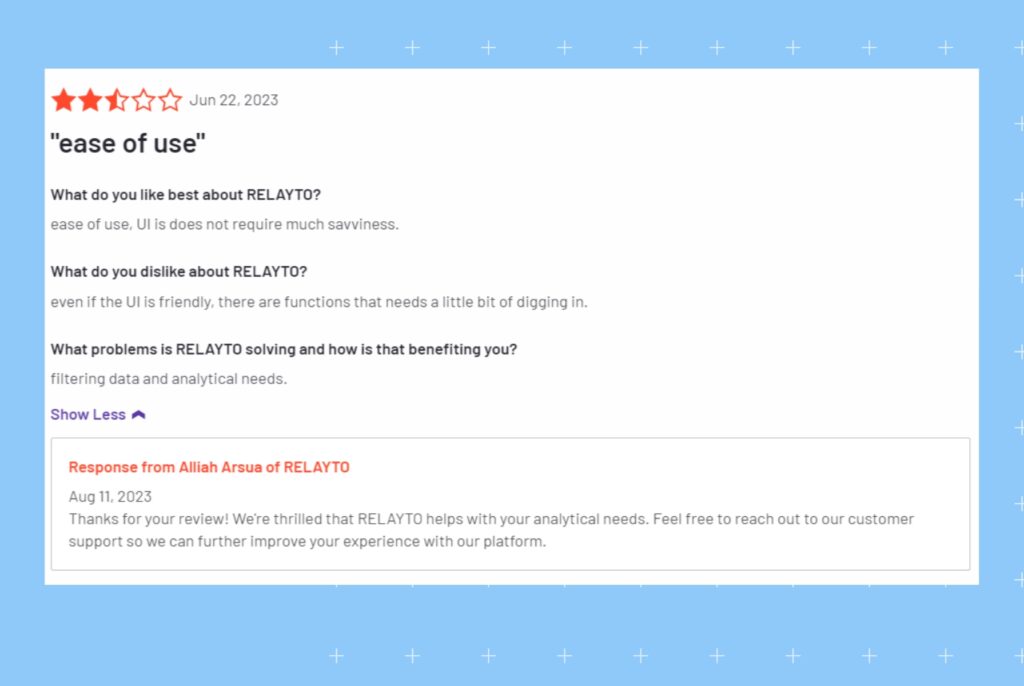
3. Be empathetic and understand their perspectives
Handling difficult customers means making them feel you understand their origin. And the only way you can do that is by expressing empathy for their perspective.
Here, walking a mile in their shoes, so to speak, goes a long way.
A difficult customer example would be a hotel guest complaining that she can’t heat her room above the pre-established threshold of 74 degrees. That may seem unreasonable to you until you learn she has a medical issue that leaves her feeling cold, even in warm temperatures.
So, acknowledge the customer’s feelings, show understanding, and validate their emotions.
4. Allow customers to explain their issues
It’s easy to label a customer as simply being difficult. And when you do, you risk cutting them off before they’ve had a chance to explain their issues.
Dismissing a customer as a troublemaker isn’t how to deal with difficult customers effectively.
Instead, encourage customers to share details. If you let them get it out, you’ll go a long way toward de-escalating the situation. Who knows, you’ll probably learn something you didn’t know.

5. Apologize sincerely for any issues
Acknowledge mistakes promptly and genuinely express regret to convey accountability and sincerity.
An example of such an incident could be: If a customer receives a damaged product, a sincere apology would be,
“We apologize for the inconvenience caused by the damaged item. We understand the frustration and are committed to resolving this for you promptly.”
6. Offer solutions, compensation, or incentives
In the case of delayed delivery, offering a solution might involve providing expedited shipping at no additional cost or offering a discount on the next purchase as compensation for the inconvenience.
7. Set clear boundaries and expectations
Communicate policies and guidelines to customers to manage expectations. It prevents misunderstandings, reduces conflicts, and establishes a transparent relationship.
An example of implementing this tip: Clearly outlining return policies on an e-commerce website, specifying the conditions for returns, and the timeline within which customers can expect a refund sets clear boundaries and expectations.
8. Demonstrate patience throughout interactions
Maintaining a calm and understanding demeanor during customer interactions, even in challenging situations. It helps diffuse tension, fosters a positive atmosphere, and enhances the likelihood of a satisfactory resolution.
Example based on real-business scenario: A customer service representative, faced with an angry customer upset about a billing error, demonstrated patience by listening attentively, empathizing with the frustration, and calmly guiding the customer through the resolution process.
9. Follow up to ensure customer satisfaction
Checking in with customers after a resolution to confirm their satisfaction and address any lingering concerns.
It is important because it shows an ongoing commitment to customer happiness and provides an opportunity to resolve any additional issues.
Example: After resolving a customer complaint about a faulty product, a follow-up email or call could be, “We wanted to ensure the replacement product met your expectations. Can we do anything else to ensure you’re fully satisfied?”
10. Seek supervisor assistance if necessary
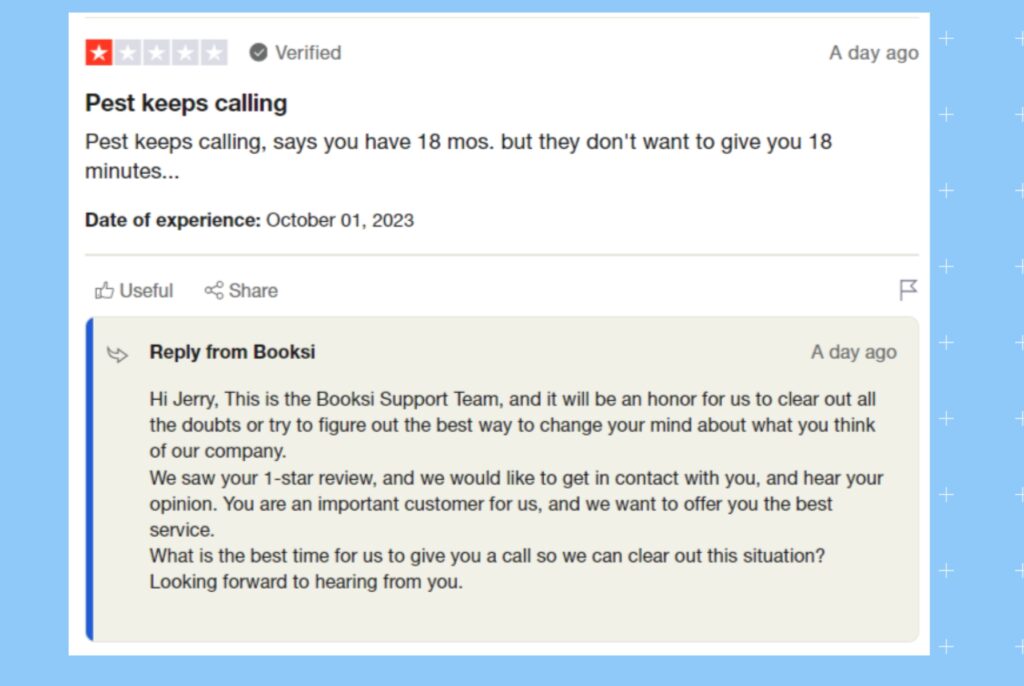
Involve a higher authority when issues escalate beyond your capability to ensure proper resolution.
An example of how you can use this tip to deal with a difficult customer: If a customer is dissatisfied with the resolution provided by a customer service representative, escalate the issue to a supervisor for a higher-level review and resolution to show your company’s commitment to resolving concerns.
11. Train staff in customer service skills
Conducting regular training sessions on effective communication and problem-solving techniques for customer service representatives ensures they are well-equipped to handle a variety of customer interactions professionally.
12. Implement feedback loops for continuous improvement
Establish feedback loops to systematically collect and analyze customer input, driving ongoing improvements in products or services.
An example of how you can implement this to deal with a difficult customer: Gather customer feedback through surveys or reviews and use that data to identify areas for improvement, such as product quality, service responsiveness, or website functionality.
13. Establish a proactive communication strategy
Did you know you can utilize AI for effective customer communications with Birdeye’s Webchat & Inbox platforms? This communication shows you are transparent with customers, which increases their loyalty toward your brand.
An example of using this tip in your brand communication: Proactively notify customers of potential delays in shipping or product availability and provide regular updates on the status of their orders to manage expectations and avoid surprises.
14. Foster a customer-centric culture within the organization
Instill a customer-centric culture throughout the organization, emphasizing the importance of customer satisfaction in every role and decision-making process. Encourage a company-wide focus on meeting customer needs and expectations.
An example that you can imbibe in your company to avoid dealing with difficult customers:
- Hold regular team meetings for customer feedback analysis
- Emphasizing the importance of customer satisfaction in employee training
- Recognize and reward employees who go above and beyond to meet customer needs.

6 effective strategies for handling difficult customers
Apart from implementing the tips mentioned above, here are six strategies you must include:
- Use positive language and tone
- Acknowledge customer frustrations genuinely
- Offer personalized solutions
- Swiftly propose practical solutions
- Provide a timeline for resolution
- Check-in post-resolution for satisfaction
Common mistakes to avoid when dealing with difficult customers
Many difficult customers will still recommend your business to their friends and family if you handle their complaints effectively. The tips mentioned above will help you improve your online brand reputation.
Along with them, here are some common mistakes to avoid when dealing with difficult customers:
1. Don’t take it personally
This good advice for life in general also works well when you need to know how to handle difficult customers.
Remember that unhappy customers are angry at the company, not you.
What to do: Refer to our positive review examples templates and use the Birdeye Review platform to:
- Reply to customer reviews
- Write the perfect review reply with AI
- Translate reviews and replies
- Target and tackle fake reviews
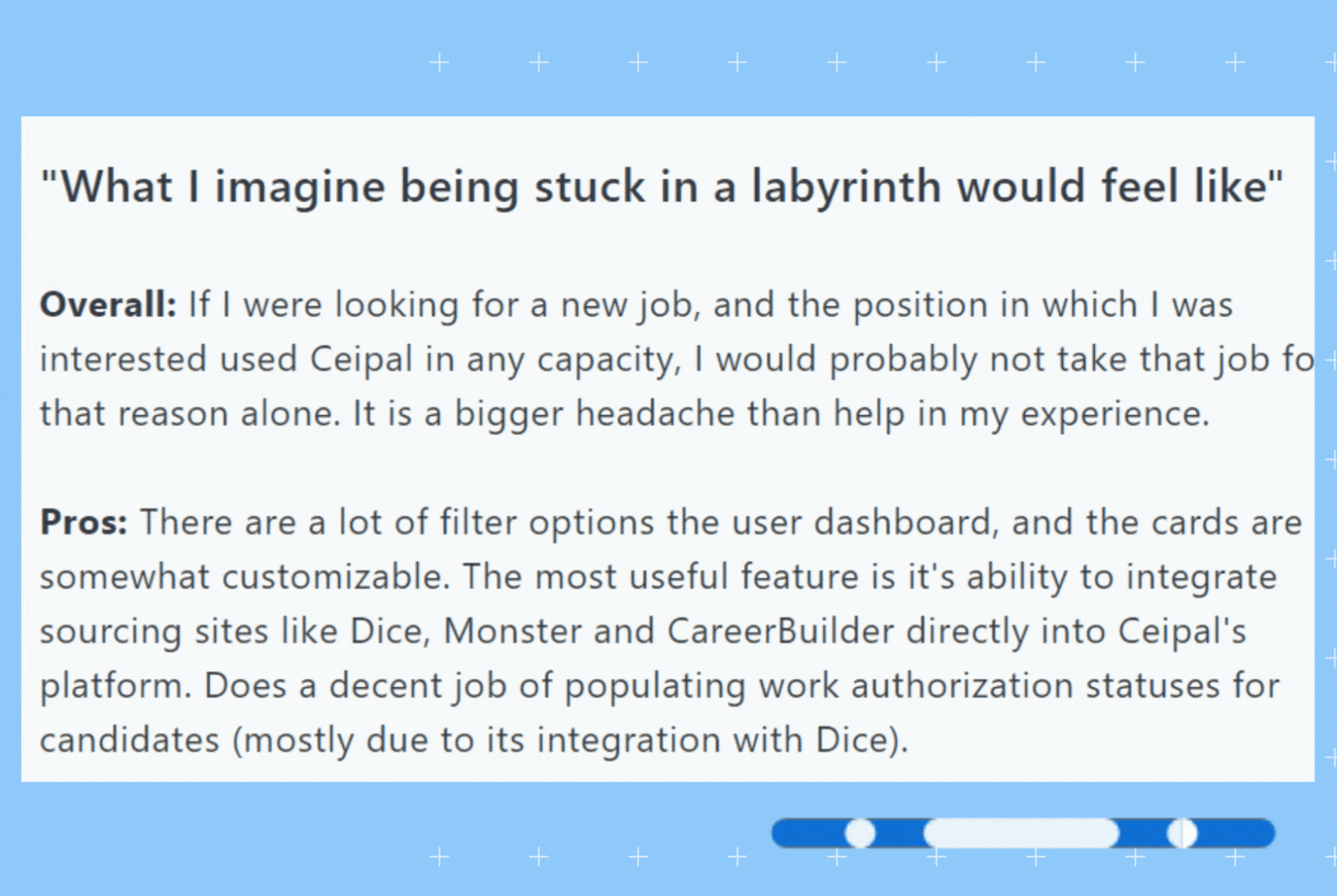
2. Ignoring or dismissing customer concerns
Customers who can’t hear their complaints from the company will go to social media to air their grievances.
You already know that social media is a potential hotbed of negativity. These social media sufferers amplify their dissatisfaction publicly, making their concerns visible to a broader audience.
You risk damaging your online reputation if you leave difficult customers no other way to resolve their issues.
Pro tip: Your review management in 200+ review sites gets easy with Birdeye. With it, you can: - Respond promptly - Apologize publicly - Provide solutions Birdeye helps you make your review management stress-free so you don’t have negative customer satisfaction.

3. Don’t respond late
Responding late is almost as bad as not responding at all. Delaying in your response to a customer complaint conveys disinterest and apathy.
4. Don’t make assumptions
Perhaps the most flagrant assumption you can make is thinking the customer is being unreasonable or somehow wrong. Even jerks deserve a decent customer experience until their behavior becomes the issue. If your service or product is lacking, own up to it and make improvements.
With AI-powered capabilities, Birdeye Reviews helps you understand the customer’s review sentiment to respond appropriately.
FAQs about how to deal with difficult customers
The first thing is to remain calm. Then, listen to a difficult customer with empathy while seeking to understand their perspective. Create a plan of action that resolves their issue. And follow up to make sure the problem is solved.
Always listen to a dissatisfied customer to fully understand their issue. Then, respond calmly. Be empathetic and demonstrate that you understand their perspective. Most importantly, try to come up with a solution for their problem.
Deal with difficult customers seamlessly with Birdeye
Sometimes, you find yourself face-to-face with a difficult customer who just can’t be pleased. Remember, the first rule of how to deal with difficult customers is to remain calm. You’ll not only de-escalate the situation but also safeguard your mental health.
Understand the type of difficult customers you’re dealing with and use the tips recommended above to improve your business.
Birdeye can help you with all aspects of your customer experience. Click on the banner to learn more.

Originally published


![this is a 1 / 1 – [Feature image] of the blog about 31 irresistible car sales email templates to close more deals.](https://birdeye.com/blog/wp-content/uploads/Feature-image-31-irresistible-car-sales-email-templates-to-close-more-deals-375x195.jpg)
![[Feature image] Are you on these 40+ powerful eCommerce review sites blog](https://birdeye.com/blog/wp-content/uploads/Feature-image-Are-you-on-these-40-powerful-eCommerce-review-sites_-375x195.jpg)